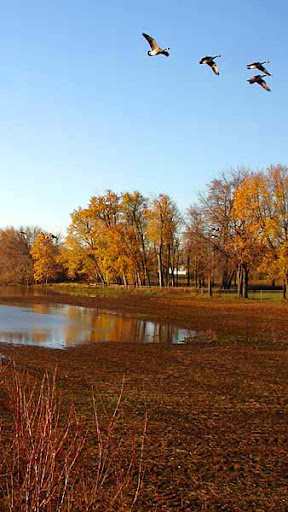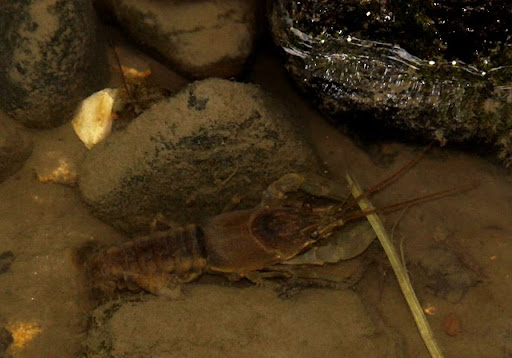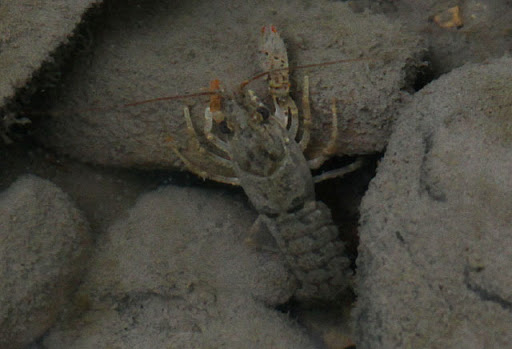On July 4th, six of us took to the river at the Chainy Ford bridge (700E) on a drizzly morning including Lex, Joan, Jim, Eleanor, Tom and myself. With optimism, we headed out expecting the light rain to taper off into sunshine by late afternoon.
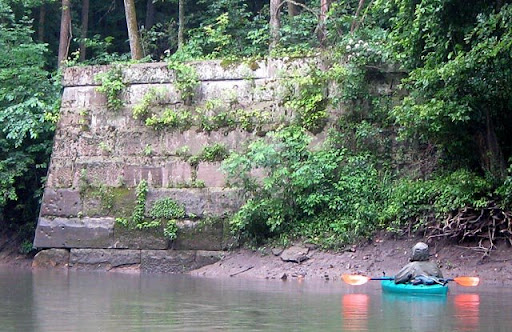
About two miles into the trip we passed massive sandstone blocks that formed the bridge abutments for the C & EI (Chicago and Eastern Illinois) Railroad. The bridge and tracks are gone now, but the stones were alive with plants and animals. Upon closer examination, wolf spiders could be seen in the crevasses, centipedes clustered on the green mats of moss, and up near the top we discovered white-flowered shrubs that we later keyed out to be the native hydrangea
Hydrangea arborescens. I was unaware that there was a native hydrangea in our area! Later in the day we found many of these plants along the banks, especially in the shale outcroppings where the broad, white flowers cascaded down the bank. Patches of green water willow
Justicia americana could be seen growing well along the banks and in the sand and gravel bars throughout this stretch of stream and a number of hibiscus plants
Hibiscus palustris were spotted along the banks that will bloom later in August.
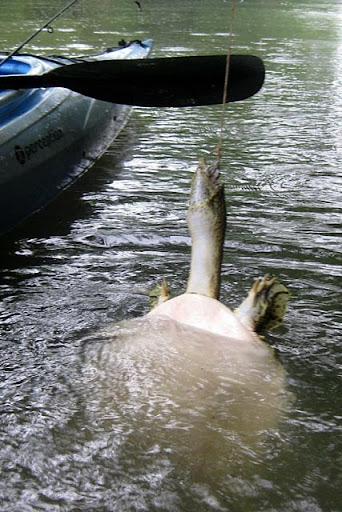
Tom and Jim tried their luck at fishing but caught only a few smallmouth bass
Micropterus dolomieui. At one site trotlines lay baited across our path. Tom noticed a bobbing line and discovered a large soft-shelled turtle with dark green spots caught on the hook. Looking it up in the Field Guide to Amphibians and Reptiles of Illinois later, we discovered it was a spiny soft-shelled turtle
Apolone spinifera.
The river was not as clear as we had hoped. It was surprising at times to see the yellow mud line in the stream where the muddy sediment draining out of a gully met the stream channel waters.
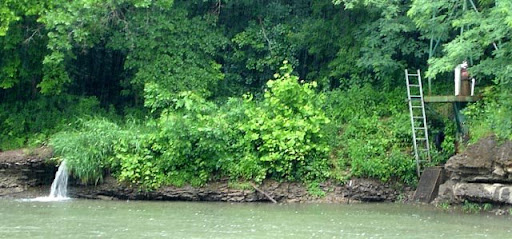
After four miles we took a lunch break underneath the Rock Ford bridge at County Highway 10-850E where we contemplated the weather, the Oakwood sanitary district and their downstream water intake for drinking water, and the 6-mile journey ahead. Unable to get any phone service in the river valley to request Jake’s shuttle service, we decided to paddle on.
Periodically someone would say, “Hey, I think it’s getting light in the west!” but alas, it was not to be, so we watched the kingfishers and great blue herons instead and pondered dry clothes and warm homes. Jim was unable to locate the heron rookery but he did notice two old coal mine pilings along the way reminding him of a time gone by when strip mining was common in this area. Even though most of the birds were quiet in the rain, Jim and Eleanor did spot a bright yellow prothonatary warbler
Protonitaria citrea and they heard the call of the summer tanager
Piraga rubra.

The gentle hush of the rain as misty clouds drifted overhead in the canopy created a tranquil setting as we explored the lower reaches of the Salt Fork. Unlike the Champaign County portion, this reach contains more riffles and bedrock ledges as the Salt Fork cuts downward toward sea level providing “wheee” moments as we shot the chutes in our kayaks! Interesting shale outcroppings became common as we paddled further downstream exposing large glacial boulders and coal seams. Perhaps due to the gentle rain, mini rock falls occurred periodically along the way and the stones came alive with colors and patterns as we explored the gravel bars. Crinoid fossils and Indian paint pots were there along with relic and fresh mussel shells including specimens of the state threatened purple wartyback
Quadrula pustulosa. To our delight, near the sandy shore, Lex found a live specimen of this beautiful rare mussel plus a very small soft-shelled turtle that was fresh but quite still. Had it just emerged from its shell or was it dead? As a wise prophet once said, “What we don’t know could fill the Grand Canyon” and I, for one, am beginning to think maybe he might be right.
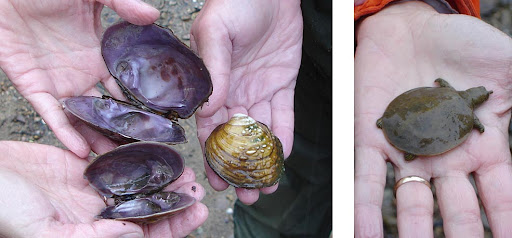
By the end of the trip at the confluence of the Middle Fork, we were all soggy and chilled, ready for a warm, dry home and some hot chocolate. But we all agreed it is a beautiful and interesting stretch of stream that should be revisited at a drier, warmer time, perhaps this fall. To put in at the Oakwood bridge and just enjoy the gravel bars along the way would be a trip in itself, and when the river is clear it would be wonderful to look for mussels again. What a treasure to have this river in our backyards.
Suzanne Smith
